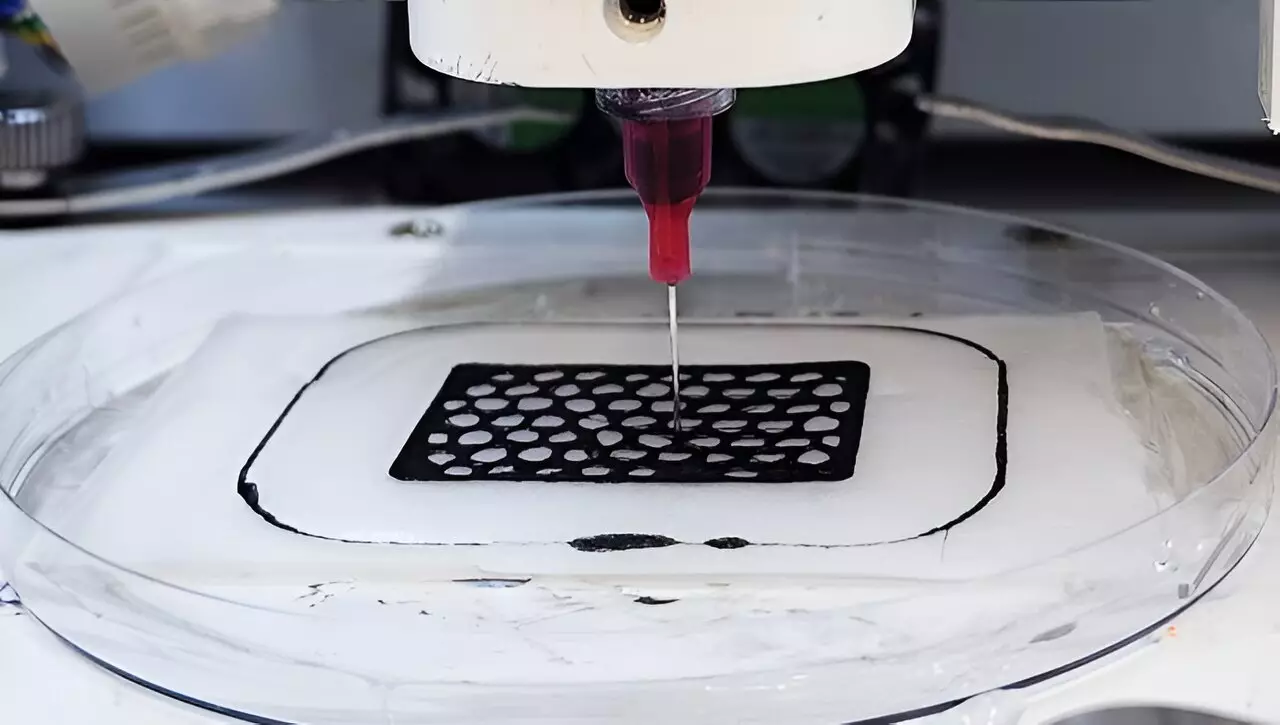Engineers at the University of California San Diego have made a significant breakthrough in the field of 3D printing, introducing a method that opts for simplicity and sustainability over complexity and ecotoxicity. Published in the esteemed journal *Nature Communications*, this innovative approach utilizes a polymer ink along with a salt water solution to create solid structures in an efficient and environmentally conscious manner. The core ingredient of this new process is a liquid polymer known as poly(N-isopropylacrylamide) or PNIPAM, which shows promise in revolutionizing materials manufacturing.
The novelty of this technique lies in its ability to rapidly solidify PNIPAM when introduced into a calcium chloride solution. Upon contact, the polymer instantly transforms into a solid state due to the salting-out effect—an interaction resulting from salt ions attracting water molecules from the polymer solution. As water is removed, the hydrophobic chains within the PNIPAM aggregate densely, leading to solid formation. This method drastically reduces the requirements for energy-intensive procedures traditionally associated with solidifying polymers, such as the application of heat and pressure.
Unlike conventional polymer solidification processes that rely on harsh chemicals and specialized equipment, this new method operates at room temperature and under ambient conditions, eliminating the environmental costs typically incurred in manufacturing processes. Jinhye Bae, the study’s senior author and a professor at the UC San Diego Jacobs School of Engineering, emphasizes the importance of this simplicity, stating that the method “requires no additional steps or toxic substances”. Moreover, the process is reversible. The structures formed can be dissolved in fresh water, allowing for the reuse of PNIPAM ink, which contributes to a more circular economy in polymer manufacturing.
To showcase the flexibility of their technique, the researchers demonstrated its capability to print diverse structures, including electrically conductive circuits. By mixing PNIPAM with carbon nanotubes, they successfully created a circuit that powered a light bulb, illustrating the potential for integrating this technology into electronic component manufacturing. The water-soluble nature of these printed circuits raises intriguing possibilities for creating recyclable electronic devices that could significantly reduce electronic waste.
The 3D printing technique developed at UC San Diego demonstrates the intersection of innovation and sustainability. By utilizing a straightforward process that transforms a polymer solution into solid structures through a simple chemical interaction, this method paves the way for future advancements in sustainable materials manufacturing. The implications of this research extend beyond just the realm of 3D printing; it hints at a future where eco-friendly and recyclable materials become the standard in various industries, ultimately contributing to a more sustainable planet. As the researchers envision, the potential for creating environmentally friendly polymer manufacturing technologies is both exciting and necessary in today’s ecological landscape.

